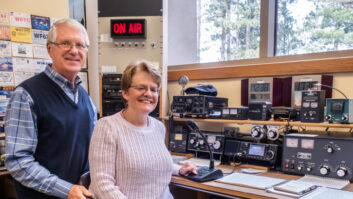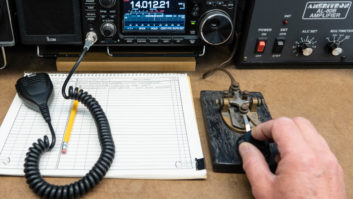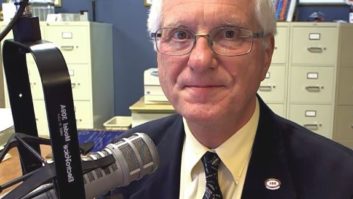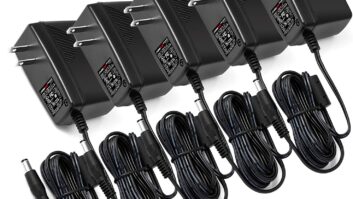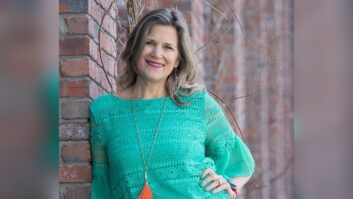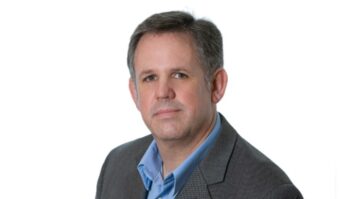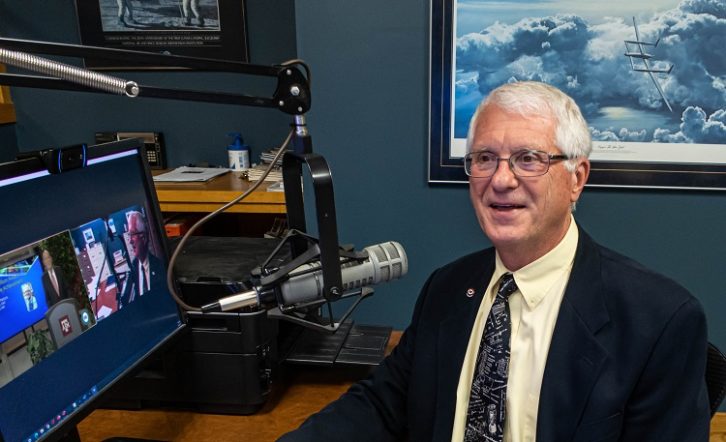
Prior to this autumn, only nine people had received a lifetime achievement award from the Society of Broadcast Engineers.
Mark Persons is the 10th. The award was presented to Persons during an SBE online membership meeting and award ceremony. Radio World is proud that Mark is a longtime contributor and valued member of the RW family.
We asked him to share thoughts and memories of his career.
This story starts in the mid-1920s when my father, Charles B. Persons, became a radio broadcast engineer at age seventeen at WEBC Radio in Duluth, Minn. — the only station in town. It grew to become part of a seven-station network before he left to build our own WELY in Ely, Minnesota, in 1954.
It was a great time for me to learn electronics and Ohm’s Law, turn knobs on the 250-watt AM transmitter and build Heathkit equipment at age seven. That station was later owned by well-known CBS journalist Charles Kuralt.
I became a radio amateur in 1963, the year before our family built and owned KVBR Radio in Brainerd, Minn. At age 17, it was a natural for me to wire the transmitter and studios with the latest innovation: cartridge tape decks.
There was never a question about my future. Broadcast engineering was not just a job, it was a lifestyle.
Three years later, I found little interest in college, which taught nothing about electronics. I enlisted in the U.S. Army and taught electronic repair at Fort Monmouth, N.J. Then it was off to Vietnam to do high-tech electronic repair. The plan was to fulfill the obligation to our country so I could go back to broadcast engineering in 1969.
Work ramped up in the 1970s, when engineers were let go from radio stations because the FCC no longer required them. Soon I was a full-time independent radio broadcast engineer, building 12 new stations and repairing countless others. Good test equipment helped solve the problem of a noticeable hearing loss from my service in Vietnam.
Treat it like your own
Coming from a family ownership situation, I treated each station as if it were my own. The attachment was personal because the work was mostly for clients who believed in engineering. A message on our telephone recorder said, “I am out working on one of America’s great radio stations.”
My wife Paula came into the business full-time after working as a legal secretary. She has a keen sense of character and it paid off. Her job was to run the office, freeing me to go out in the field 60 hours a week at 40 or more clients.
Once I was almost hit head-on by a drunk driver at 2 a.m. but went in a ditch instead.
I never wanted to own a station. The challenge of installing, troubleshooting and repairing equipment was more than enough. It is a great feeling to get all electrons flowing in the same direction, so to speak.
Along the way, two engineers tried to get into our “territory” by promising lower prices. (They never asked; we might have given them a few stations.) In the end, the clients came back to us for dependable results.
We lost less than $4,000 to bad debts over the years. I remember two times when a customer was slow to pay and then called looking to send me to a transmitter right away. Paula’s response in one case was, “You are no longer a customer!” That day I drove right by his downed transmitter while coming back from another project and did not stop.
That dented our reputation a bit, but we stuck by our principles. As Paula said, “We are not a bank that loans money.”
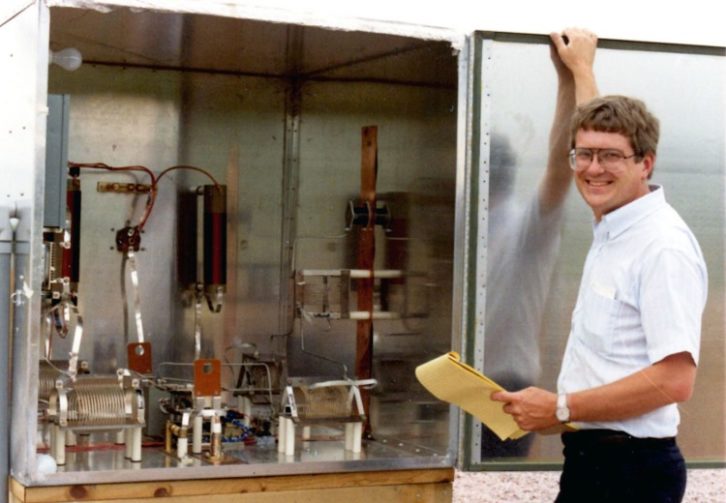
My first AM directional was a five-tower array in 1982 at Hibbing, Minn. It was built from parts, including a custom phasor controller. The phasor was, and still is, a room in a building with an eight-foot-high aluminum wall with inductors, capacitors and contactors on the backside. Coupling units were built open-panel style at each tower.
The client liked this so much that he had me build a three-tower array in Cape Coral, Fla., and a three-tower in Carmel Valley, Calif. All 10KW stations. He gave me the freedom to design and build what I thought was best for each job.
Then there were more than 40 C-Quam AM stereo installations. One of them was at the Cape Coral station, which introduced the “oldies” format in 1986. It placed second in the Arbitron after being on the air only six weeks.
Sharing knowledge
Never satisfied, I modified equipment, then designed and built many electronic gadgets used in stations. That evolved into designing products for manufacture such as the Programmer 3A Live Assist Program Controller and the Max-Tel Remote Broadcast Telephone, later updated to be the Max-Z and ZII.
I have always enjoyed telling stories. Approximately 188 of my articles have been published, mostly in Radio World. Then there is the popular Tech Tips section on my http://mwpersons.com website, where free answers are given to radio broadcast engineering problems.
[Read recent Radio World columns by Mark Persons.]
We retired when I was 70 and mentored two engineers to take over the territory. There was no charge except for a few hours of classroom training to bring them up to speed on measuring AM impedance etc. Then the SBE mentor program added two mentees in other parts of the country. I also became a member of the National Radio Systems Committee’s AM Improvement Working Group.
It is volunteer work, and it feels good to continue to be a part of the broadcast industry that I grew up and prospered in.
The plan is to keep writing articles for Radio World in the quest of spreading knowledge to broadcast engineers everywhere. Radio has a great future and needs good engineers to keep it going.
Regarding the SBE Lifetime Achievement Award: I had no intention of seeking that or any other accolade. Life just worked out that way while keeping the “families” of stations the best they can be. Paula says she will bury me next to a transmitter when the time comes.
Comment on this or any article. Write to radioworld@futurenet.com.
The SBE John H. Battison Award for Lifetime Achievement recognizes and pays tribute to individuals for their dedication, lifelong achievement and outstanding contribution to broadcast engineering, according to the society. Prior recipients are Benjamin Wolfe and James Wulliman (1995), Philo and Elma Farnsworth (1997), Morris Blum (1998), Richard Rudman (2002), Richard Burden (2005), John Battison (2006) and Terry Baun (2010). You can watch the replay of the membership meeting and awards ceremonies on the SBE YouTube channel.
